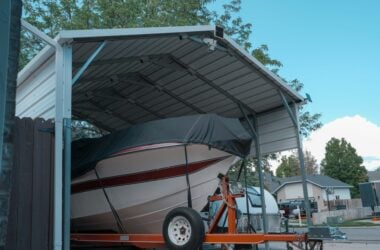If you are a boat owner or you are thinking about owning one, it is exciting to get your boat out on the water and have fun. One of the most important factors to consider in owning a boat is where you plan to use your boat, how often you plan to use it, and any budget restrictions.
When storing your prized vessel, you’ll
Important Factors in Choosing Boat Storage Solutions
If you’re storing a vessel, there’s a bounty of boat storage options available. The one you choose will depend on several factors. Here are a few things to consider when shopping for boat storage:
- The Size of the Boat
The bigger the boat, the more limited the storage options available.
- Location
Boat storage in milder climates is so much easier and more readily available than in areas with severe winters. Why is winter weather bad for boats? Water can freeze and damage the exterior or internal pipes and parts.
- How Often You Plan to Use the Boat
If you will be on the lake every weekend or if you only take the boat out once per year for a week’s vacation, that will make a difference in the kind of accessibility that you will require. - Your Budget
Are you willing to do a bit more work and pay less? You may not need additional storage if you are already paying slip fees. You can store the boat there and maintain it on-site. This is a great option if you have a boathouse or slip on your coastal property. Alternatively, you can park it in your yard for free.
Types of Boat Storage
Storage can basically be broken into two types of storage: indoor boat storage and outdoor boat storage. But there are many kinds of storage within these two types. They include:
- Lifts
- Slips
- Storage units
- Self-storage
- Boatyard storage
To find out which is right for you, we need to drill down into the pros and cons of each.
Types of Indoor Boat Storage
Indoor boat storage options are fully enclosed, offering optimal protection/coverage against the elements. For an added cost, you can find climate-controlled, indoor boat storage options.
Generally speaking, indoor boat storage options are more expensive than outdoor storage.
If leaning towards this type of boat storage, you will need to consider the availability, security, and amenities that meet your needs. Indoor storage options for boats are available in many forms. Some of the common options include:
Dry Stacked Storage (Indoor)

Stacked storage is also known as the “boatel.” This is a storage option where boats are stored in a warehouse on racks. The boats are handled with forklifts and are taken in and out by trained personnel. Some boat owners use this storage to avoid slip costs; they can call ahead and take their boat out only when they are ready to use it.
Since it is in a warehouse, your boat is not exposed to the elements (such as UV rays and storms). Dry boat storage options also protect your boat from the water.
Some facilities limit the number of times you can take down your boat without incurring additional fees. If your boat is unusually large or if you live somewhere other than a coastal location, this might not be a storage option.
These facilities normally implement security measures to avoid theft and vandalism. However, you are at the mercy of the attendants to have your boat taken in and out of the water.
Indoor Self-Storage (Storage Unit, Private Garage Rental, etc.)

Some boat owners opt to store their vessels in enclosed self-storage units with ground-level, drive-up access. To safely store a boat, you’ll need a space measuring at least 10’x15′ (with larger boats, you may need a 10’x20′ or 10’x30′ unit).
Note: Not all facilities can accommodate boat owners, especially indoor-access facilities, without any drive-up units on the premises.
Types of Outdoor Boat Storage
On average, outdoor boat storage options have greater availability and are often significantly less expensive than indoor storage options (especially those indoor options with climate-control features).
Storing your boat outdoors does require thoughtful planning and winterizing beforehand. Without the right precautions, your vessel can sustain damage, shortening its lifespan.
Your boat will need to either have a canopy, be shrink-wrapped, or be housed under a protective cover to help protect it from the elements while stored.
Below are the common types of outdoor boat storage to choose from:
Dry Stack (Outdoor)
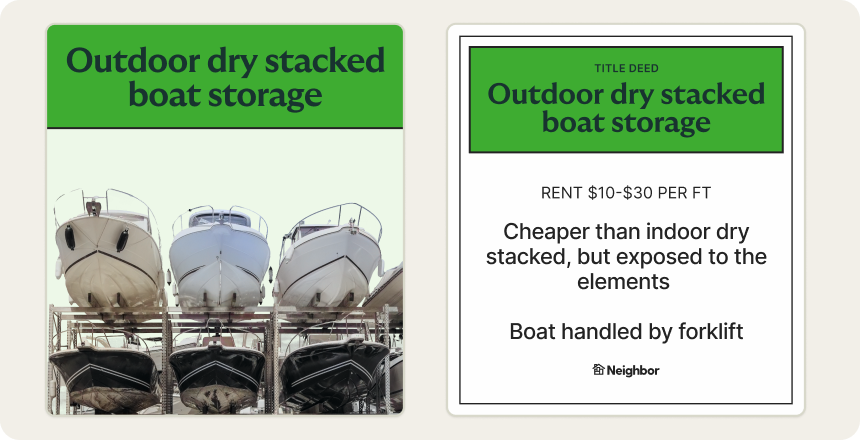
Liked with indoor dry stack storage, boats are handled using a forklift. Boats can only be loaded and retrieved by trained personnel, personnel who are authorized to operate the heavy machinery required. Therefore, you’ll need to notify staffers ahead of time if you need to retrieve your vessel.
Note that with outdoor dry stack storage, boats are exposed on all sides (as there are no walls). In some cases, outdoor dry-stack structures will have a roof, but this feature isn’t considered standard.
While your boat isn’t submerged in the water, reducing the risk of decay, outdoor dry-stack storage still leaves your vessel susceptible to the elements (rain, debris, etc.), which can still leave your boat vulnerable to damage/degradation.
Wet Slips
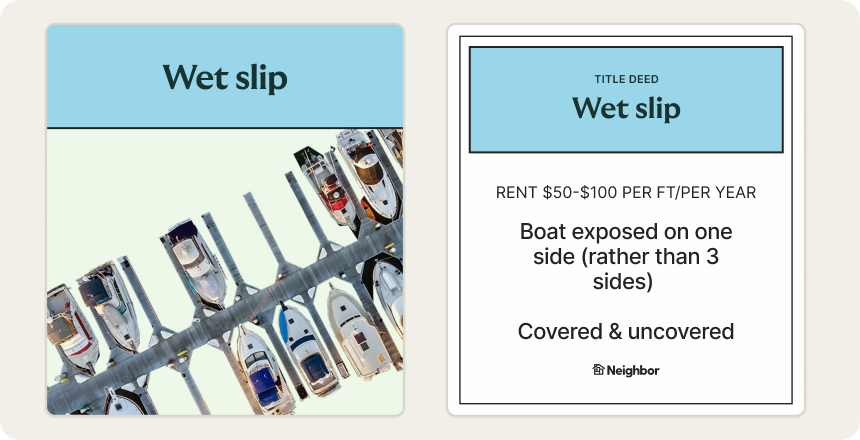
Wet slips are the slots along a boat dock in a marina where you can park your boat directly in the water. They offer the most convenience, but depending on the marina facility, they can be the most expensive option.
They are great if you use your boat year-round. With a wet slip, you won’t have to tow your boat or drop your vessel into the water. Your boat will be readily accessible at the drop of a hat.
Note: It’s not uncommon for marinas to require external maintenance or repairs to be performed elsewhere with the boat on dry land. If you do choose to store your boat in a wet slip, know that because it’s in the water longer, it’ll require more attention to exterior maintenance and upkeep.
Boat Lift
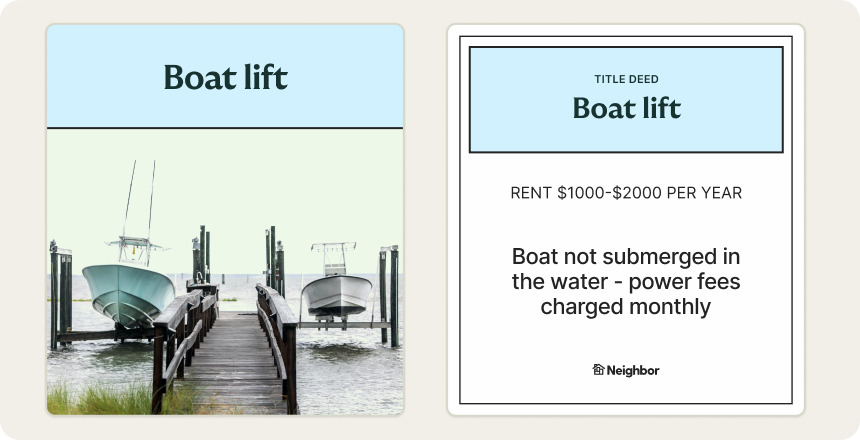
Lift slips are categorized as a dry boat storage option, given that the lift suspends a boat above the water when not in use. Unlike wet slips, storing your boat on a lift slip significantly reduces the risk of damage to the hull of your boat and can prevent the accumulation of algae or barnacles altogether.
PRO TIP: Many people prefer dry or wet slips offered through their nearby marinas because of the ease of use, convenience, and social aspects. Many marinas include certain amenities baked into the cost of a slip rental, such as clubhouse access, pool access, and wi-fi access.
Boatyards

Boatyards are usually fenced-in outdoor storage areas for boats, similar to a large private lot. You will see these lots in areas where there is heavy boat or RV traffic.
Though an inexpensive storage option, boatyards offer almost zero protection against outdoor elements, such as sun, wind, and hail.
If you’re considering this option, you‘ll need to winterize your boat and provide a covering. Additionally, you’ll want to research the security measures in place before booking storage through a boatyard.
Though it’s convenient for frequent usage, storing your boat outdoors will have a negative impact on its lifespan.
Outdoor Self-Storage
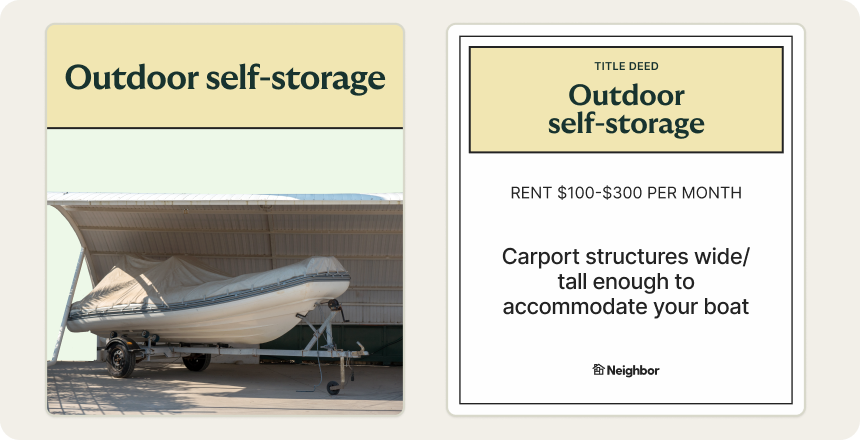
One of the least expensive ways to store your boat is choosing outdoor self-storage, whether it be canopied parking or a storage space at home.
For those the space at home, you can store your boat on your driveway, in the backyard space, or on a boat “pad” built next to the home. If you decide on this mode of storage, be sure you check local regulations or HOA guidelines. You’ll also want to ensure your boat is secured to your trailer and properly covered to protect against weather elements and pests.
Benefits of Storing Your Boat with Neighbor
With Neighbor, a peer-to-peer Boat Storage marketplace, you can find boat storage options in all 50 states, near your home or your favorite boating locations. At prices 50% lower than traditional boat storage options, you can reduce the overall cost of boat ownership.




